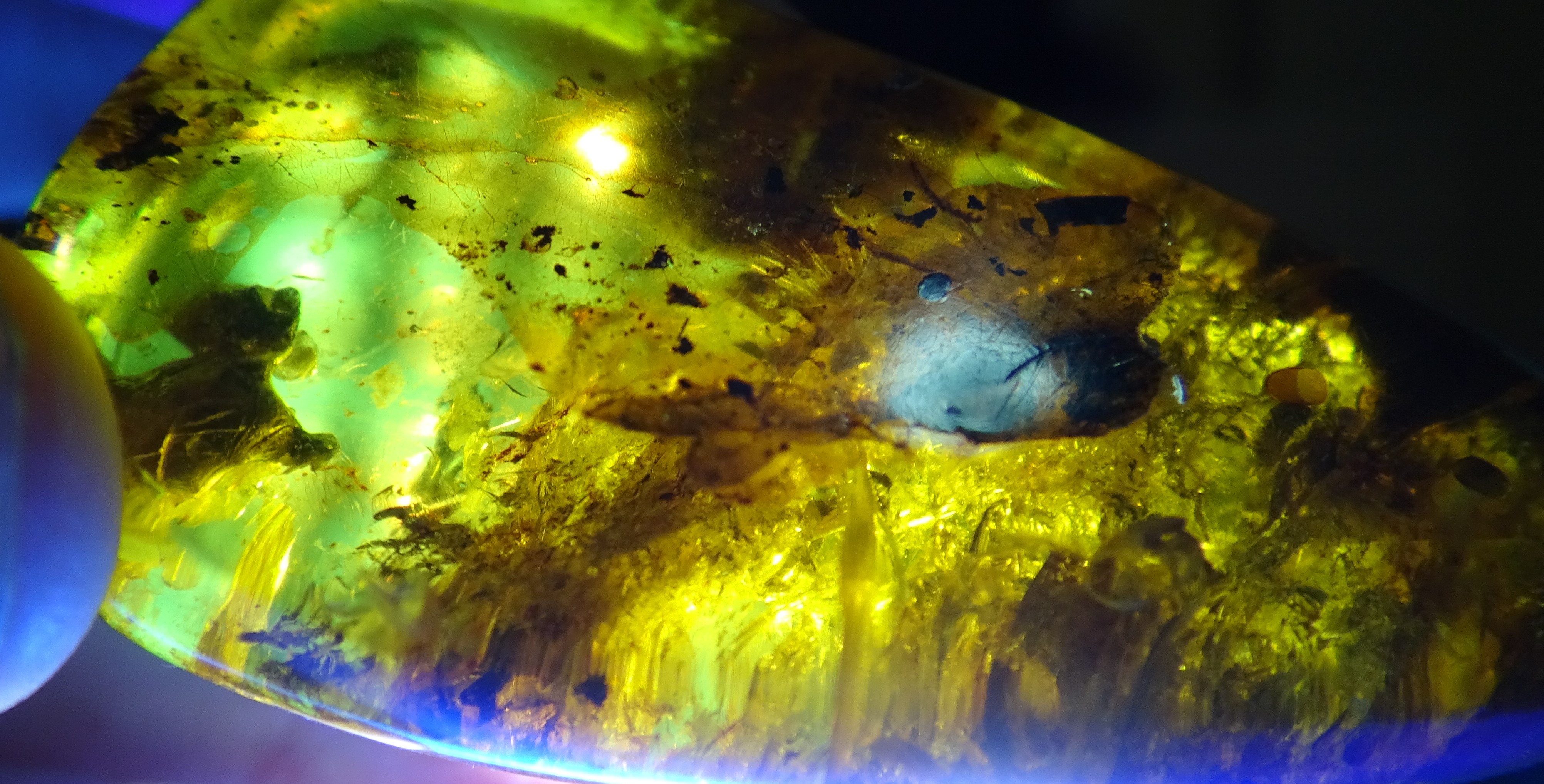hidden larger pterosaur in amber
Although the small pterosaur in amber is very clearly visible to the naked eye the larger pterosaur is not so clear or well preserved.
The picture below was inspired by incredible ct scan renderings performed by Professor Christopher Meehan, the Harvard scientist who published his discovery of the world's first vegetarian spider after much ridicule. When Romeo was first acquired there were a few people who knew that something perhaps more interesting existed in the feathery mess above Romeo. After establishing that there was a second potential parent of Romeo also trapped in the amber and seperating the wings of both the mother and father we identified the angle best to use ultra violet light to reveal the father. The head of the father to the top right is larger than his "son" Romeo. Several CT scans were made, one of the entire piece of amber and then a few close up scans for extra detail on some areas. The scan revealed the skull and teeth as well as the wing claws of the larger pterosaur which appeared as if it was reaching down to pick up the hatchling pterosaur. Microscopic examination led us to believe that although very well formed that the small pterosaur was a hatchling. Close examination under strong lights also managed to reveal the claws and teeth seen in the CT scans. Fluorescence in such ambers can also be a useful tool and indeed the picture below has been taken using ultra violet lighting which makes the features of the animal very clear helping both your eye or a camera to capture the actual scene beautifully. The small pterosaur is to the left and the head of the larger one is to the upper right facing forwards with its mouth open and wings open and slightly forwards as if reaching to grab the small pterosaur.
- To view micro-CT data on this volant CLICK HERE
- To learn about an extroadinarily large similar volant creature CLICK HERE
- To view photos of "scaly" volant in the same piece of amber CLICK HERE
- To view micro-CT data on scaly volant CLICK HERE
- Click here if you would like to see Hi Res image of the "front" side of the Romeo in amber showing mother's head, wingbone, claw and feathers
- Click here if you would like to see Hi Res image of the "reverse" side of the Romeo small pterosaur in amber
- Click here if you would like to see Hi Res image of the "close-up" side of the Romeo in amber
- Click here if you would like to see Hi Rehi res stacked micrograph of the Romeo's head with scale
- Click here if you would like to see UV light imaging with fluorescence of pterosaur adult in amber (Romeo's father)
- Click here if you would like to see teeth images from large pterosaur head without fluorescence.
- Click here if you would like to see teeth images from large pterosaur head using fluorescence.
- Click here if you would like to see hi-resolution SIDEVIEW of entire head that you can download and zoom in on
- Click here if you would like to see hi resolution entire TOPVIEW without fluorescence.
- Click here if you would like to see full stacked and stitched trial run of Romeo the small anurognathid pterosaur in amber
nano-imaging is continually in progress and should you need updates please contact us



